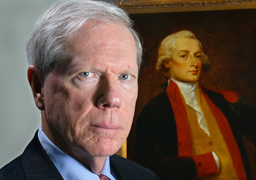 A dangerous new trend is the successful manipulation of the financial markets by the Federal Reserve, other central banks, private banks, and the US Treasury. The Federal Reserve reduced real interest rates on US government debt obligations first to zero and then pushed real interest rates into negative territory. Today the government charges you for the privilege of purchasing its bonds.
A dangerous new trend is the successful manipulation of the financial markets by the Federal Reserve, other central banks, private banks, and the US Treasury. The Federal Reserve reduced real interest rates on US government debt obligations first to zero and then pushed real interest rates into negative territory. Today the government charges you for the privilege of purchasing its bonds.
People pay to park their money in Treasury debt obligations, because they do not trust the banks and they know that the government can print the money to pay off the bonds. Today Treasury bond investors pay a fee in order to guarantee that they will receive the nominal face value (minus the fee) of their investment in government debt instruments.
The fee is paid in a premium, which raises the cost of the debt instrument above its face value and is paid again in accepting a negative rate of return, as the interest rate is less than the inflation rate.
Think about this for a minute. Allegedly the US is experiencing economic recovery. Normally with rising economic activity interest rates rise as consumers and investors bid for credit. But not in this ‘recovery.’
Normally an economic recovery produces rising consumer spending, rising profits, and more investment. But what we experience is flat and declining consumer spending as jobs are offshored and retail stores close. Profits result from labor cost savings from employee layoffs.
The stock market is high because corporations are the biggest purchases of stock. Buying back their own stock supports or raises the share price, enabling executives and boards to sell their shares or cash in their options at a profitable price. The cash that Quantitative Easing has given to the mega-banks leaves ample room for speculating in stocks, thus pushing up the price despite the absence of fundamentals that would support a rising stock market.
In other words, in America today there are no free financial markets. The markets are rigged by the Federal Reserve’s Quantitative Easing, by gold price manipulation, by the Treasury’s Plunge Protection Team and Exchange Stabilization Fund, and by the big private banks.
Allegedly, QE is over, but it is not. The Fed intends to roll over the interest and principle from its bloated $4.5 trillion bond portfolio into purchases of more bonds, and the banks intend to fill in the gaps by using the $2.6 trillion in their cash on deposit with the Fed to purchase bonds. QE has morphed, not ended. The money the Fed paid the banks for bonds will now be used by the banks to support the bond price by purchasing bonds.
Normally when massive amounts of debt and money are created the currency collapses, but the dollar has been strengthening. The dollar gains strength from the
rigging of the gold price in the futures market. The Federal Reserve’s agents, the bullion banks, print paper futures contracts representing many tonnes of gold and dump them them into the market during periods of light or nonexistent trading. This drives down the gold price despite rising demand for the physical metal. This manipulation is done in order to counteract the effect of the expansion of money and debt on the dollar’s exchange value. A declining dollar price of gold makes the dollar look strong.
This post was published at Paul Craig Roberts on December 17, 2014.




















 Follow on Twitter
Follow on Twitter
Recent Comments